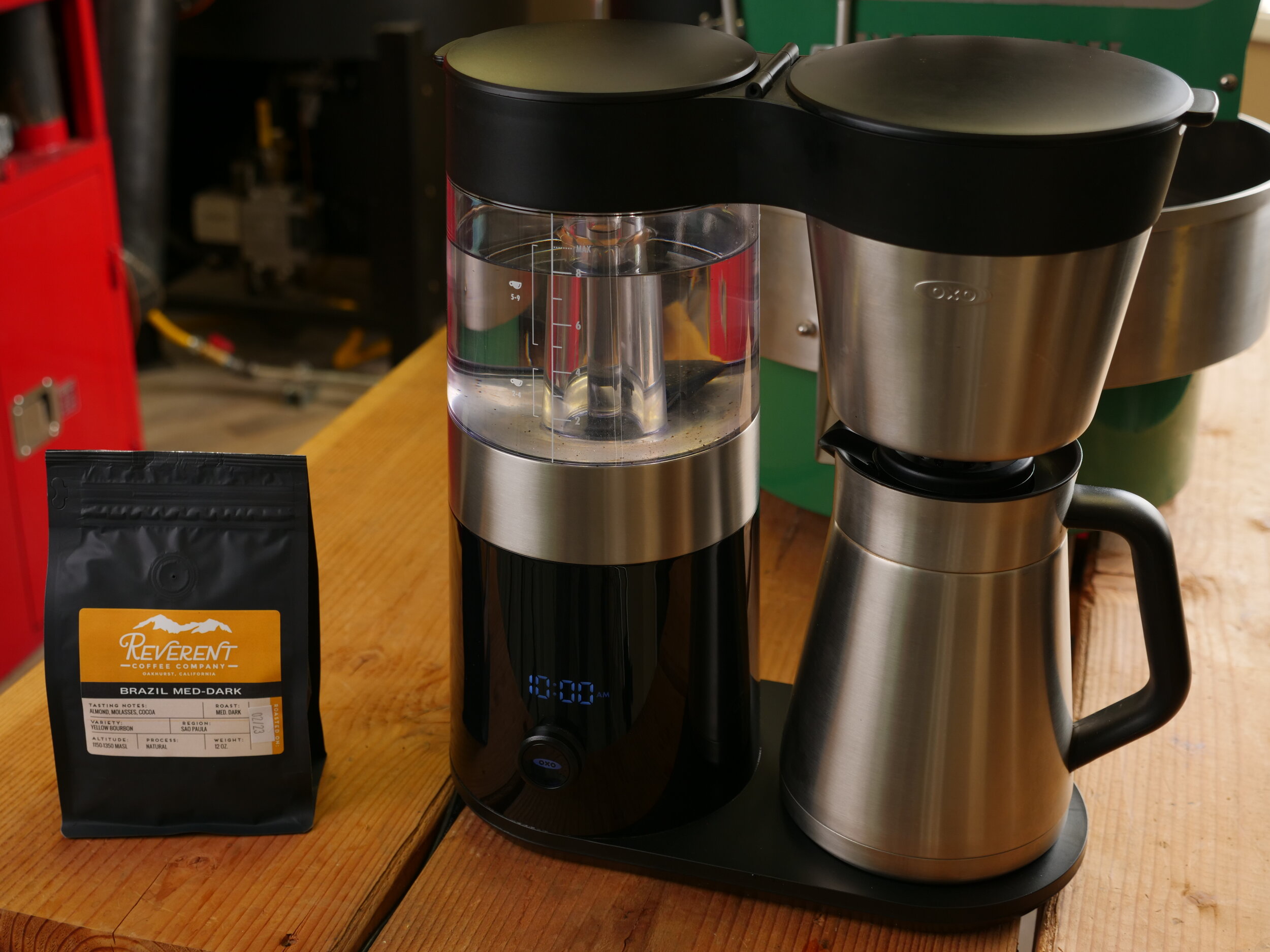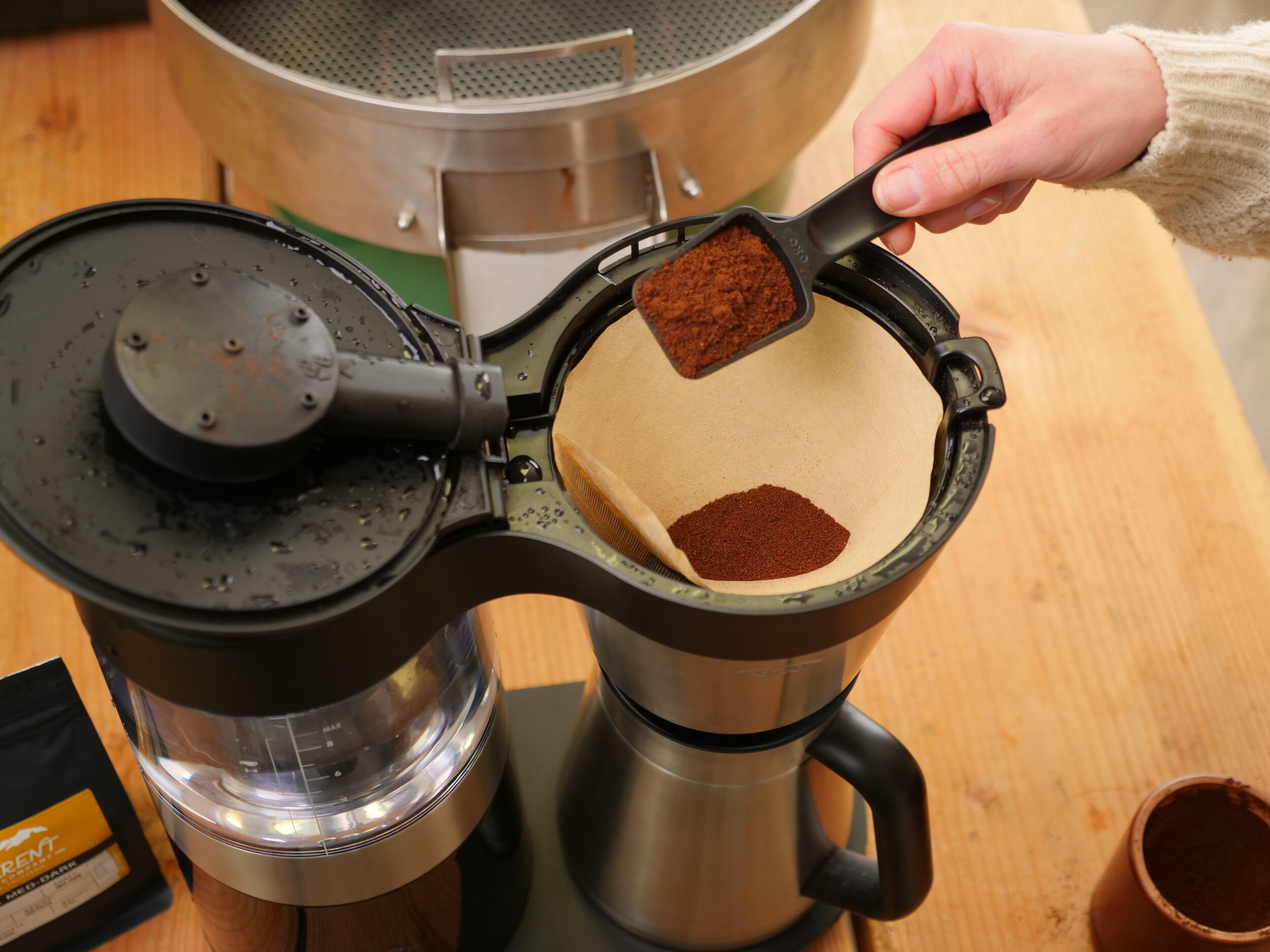How to Use a Home Coffee Maker (Seriously)
Ok, ok. I can already hear some of you saying “why on Earth are you writing a blog about using a home coffee maker?! Aren’t we supposed to be diving into coffee snobbery here?” Well, yes, and let’s journey into the depths of coffee makers here.
Firstly, the classic automated coffee maker is probably the most utilized method of making coffee at home—but typically with the worst results. I mean, we all love the convenience of waking up to coffee that’s already brewed at 6am. Who doesn’t?? The problem is that there is almost no consistency between the different models of home coffee makers. Many are designed to intentionally brew older (not fresh) grocery store coffee and, as such, they do a really poor job of brewing freshly roasted coffee.
Wait, what? Coffee makers designed to brew old coffee? This guy is crazy…
Don’t know what I’m talking about? Has your coffee maker ever overflowed out the top of the brewer, all over the counter and let tons of grounds into the coffee pot? You may have simply used too much coffee; OR, as is often the case, your coffee maker simply isn’t made to brew fresh coffee.
Fresh coffee releases gasses upon brewing (called degassing) and, in doing so “blooms.” When coffee is old (say, 6 months or so—which I’d guess is probably the average age of coffee purchased at a grocery store *gasp*) it doesn’t really bloom anymore. The coffee is stale and the gasses are gone, as is the aroma. Manufacturers know that grocery store coffee is immensely popular and capitalize on this. They want their brewers to work as seamlessly as possible for their target demographic. BUT, when you introduce freshly roasted coffee, this all gets more complicated (kind of).
You see, coffee makers typically use volumetric dosing (meaning they dose a certain amount of water in a certain amount of time). So, if you use old coffee that doesn’t bloom and expand, you can add more water initially and thus brew coffee faster. But, if the coffee is fresh, that same amount of water that is initially released is going to cause the coffee to bloom and expand; then it will be time for the brewer to add more water while the grounds are still expanding and you can see how this is going to get messy really quickly.
The point? All of this makes it extremely difficult to make great coffee in a home coffee maker. But, fear not, there are some answers here.
One solution: find the sweet spot of your coffee maker with fresh coffee. See how many cups you can brew (maybe 6 or 8 instead of the full 12) before you get grounds in the coffee pot. Also, make sure you are using a medium-fine grind. Too fine and your recipe will taste bitter. Too coarse and it will taste sour. You will have to dial it in based on your machine.
We have found that most people have access to tablespoons at home, but don’t always have scales. So, let’s put it in tablespoons here for our peeps. Try using two heaping tablespoons per cup of water (ie. use 12 tablespoons of ground coffee for 6 cups of water). If the coffee is too strong, dial it back . Too weak? Add one more tablespoon. This works well if you don’t have any other means of measuring, though we would recommend getting a cheap digital scale to measure! It will do wonders for your coffee experience and consistency. .
Also, USE GOOD WATER! This will do wonders for your home brewing! Buy filtered water or use an RO system’s water if you have it. Or, alternately, buy a jug of distilled water and put a packet of Third Wave Water in there. But take the water seriously! Chlorine and other nasty stuff in city water often completely ruins the taste of coffee. Don’t believe me? Try coffee with good water and you will definitely taste the difference. This is why coffee often tastes better at coffee shops—they use good water, precise measures and great equipment. While you may not have a $2000 drip coffee brewer at home, you will certainly get some bang for your buck by using good water.
If you really want to geek out, get a machine that is certified by the Specialty Coffee Association like the ones here . We have the 9 cup OXO brewer and have been incredibly happy with the quality of coffee from it. These are brewers made with excellence in mind. And, really, most of these aren’t that much more expensive than the one you probably already own!
Finally, and very importantly, KEEP YOUR COFFEE MAKER CLEAN. This is huge. Here are some codes to live by when cleaning. Don't use dish soap! It will leave residue on your coffee pot and it will also leave an aroma of the soap that will definitely mess with your nose (and hence tastebuds) when drinking coffee. Instead, use something like Cafiza to clean your pot. It is a cheap commercial product that is used in cafes all over the world to keep equipment free of coffee oils. This is important because old coffee oils make your coffee taste bitter and nasty. You can run Cafiza through your coffee maker every couple weeks to keep it working perfectly and also soak your coffee pot in it to remove all of the oils. Just make sure to run a couple brew cycles of clean water afterward to get all of the Cafiza residue out. You will be amazed at the improved sweetness and aroma of your coffee brewed in a clean coffee pot.
Ok, sorry this is long-winded. Thanks for reading and please comment with any questions or thoughts!





